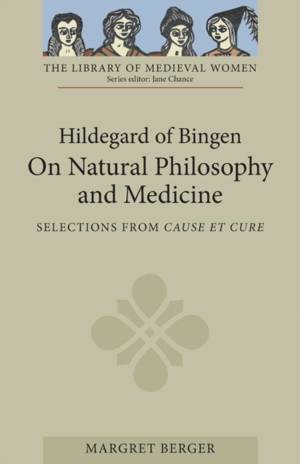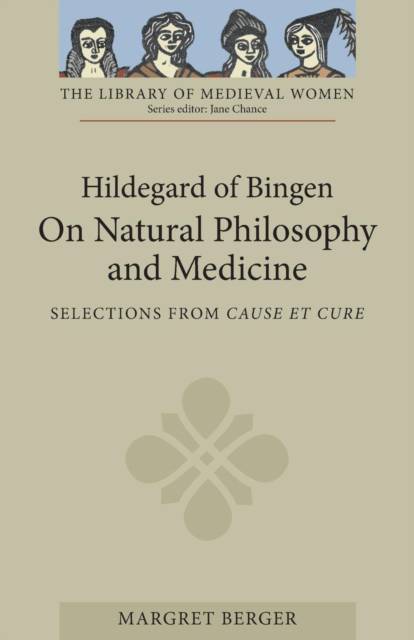
- Retrait gratuit dans votre magasin Club
- 7.000.000 titres dans notre catalogue
- Payer en toute sécurité
- Toujours un magasin près de chez vous
- Retrait gratuit dans votre magasin Club
- 7.000.0000 titres dans notre catalogue
- Payer en toute sécurité
- Toujours un magasin près de chez vous
Hildegard of Bingen: On Natural Philosophy and Medicine
Selections from Cause Et Cure
48,45 €
+ 96 points
Description
Medieval attitudes to health and treatment revealed in Hildegard's treatise. Hildegard of Bingen [1098-1179], an important figure in her own time, has come increasingly to critical attention in recent years. Cause et Cure, attributed to Hildegard, is both a cosmological text and a medical handbook;it is a densely layered work woven together from diverse threads. It begins with a chapter on cosmology which leads to consideration of the human being as a small-scale copy of the universe. From here the focus shifts to the diseases and disorders which afflict human beings. The sections on treatment which follow provide information on medieval pharmacology and herbal healing. The text discusses the differences between male and female, human sexuality, embryology, sleep and dreams, signs predicting death or survival, astrological influences.
The Introduction sketches Hildegard's life and career, and describes the cultural context with emphasis on medieval medicine. The Interpretive Essay discusses the selections presented in translation and alerts the reader to the benefits as well as the limits of medieval health care. MARGRET BERGER, formerly Associate Professor in the Division of Interdisciplinary Studies [German] at Simon Fraser University, has specialised in medieval German literature and Romance philology.
The Introduction sketches Hildegard's life and career, and describes the cultural context with emphasis on medieval medicine. The Interpretive Essay discusses the selections presented in translation and alerts the reader to the benefits as well as the limits of medieval health care. MARGRET BERGER, formerly Associate Professor in the Division of Interdisciplinary Studies [German] at Simon Fraser University, has specialised in medieval German literature and Romance philology.
Spécifications
Parties prenantes
- Traducteur(s):
- Editeur:
Contenu
- Nombre de pages :
- 184
- Langue:
- Anglais
- Collection :
Caractéristiques
- EAN:
- 9780859915519
- Date de parution :
- 27-05-99
- Format:
- Livre broché
- Format numérique:
- Trade paperback (VS)
- Dimensions :
- 137 mm x 216 mm
- Poids :
- 249 g

Les avis
Nous publions uniquement les avis qui respectent les conditions requises. Consultez nos conditions pour les avis.





